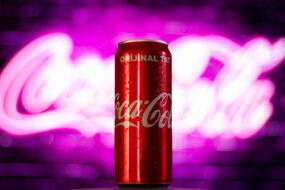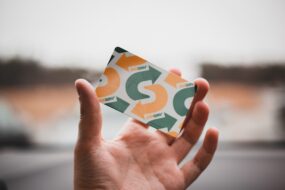
Color psychology is a fascinating field that delves into how colors influence human behavior and emotions. As I explore this subject, I find it intriguing how colors can evoke specific feelings and reactions, often without us even realizing it. From the calming blues of a serene sky to the vibrant reds of a bustling city, colors play a significant role in shaping our experiences and perceptions.
This phenomenon is not just limited to art or design; it extends into marketing, branding, and consumer behavior, where the strategic use of color can make or break a brand’s success. In my journey through color psychology, I have come to appreciate the profound impact that colors have on our daily lives. Each hue carries its own set of associations and meanings, which can vary across cultures and contexts.
For instance, while white is often associated with purity and peace in Western cultures, it may symbolize mourning in some Eastern traditions. Understanding these nuances is crucial for anyone looking to harness the power of color in their branding efforts. As I delve deeper into this topic, I aim to uncover how color can be a powerful tool for influencing consumer perceptions and driving brand loyalty.
Key Takeaways
- Color psychology explores the impact of different colors on human emotions and behavior.
- The use of color in branding can significantly influence consumers’ perception of a brand.
- Colors can be strategically used to evoke specific emotions in consumers, influencing their purchasing decisions.
- Consistent use of color in branding helps in creating strong brand recognition and association.
- Choosing the right colors for your brand is crucial as it can affect how your brand is perceived and remembered by consumers.
The Impact of Color on Brand Perception
Color and Brand Identity
The immediate association with a brand’s color scheme can significantly influence a consumer’s decision-making process, often before they even engage with the product itself. As various brands are analyzed, it becomes apparent that many successful companies have carefully curated their color palettes to align with their desired brand image.
Examples of Effective Color Use
Take Coca-Cola, for instance; the iconic red and white color scheme evokes feelings of excitement and happiness, which perfectly complements their messaging around enjoyment and refreshment. This strategic use of color not only helps in establishing a strong brand identity but also fosters an emotional connection with consumers.
Shaping Consumer Perceptions
On the other hand, brands like Tiffany & Co. utilize a distinctive shade of blue that conveys luxury and exclusivity. This approach to color selection demonstrates how brands can effectively shape consumer perceptions and preferences through thoughtful color choices, ultimately driving their brand’s success and recognition.
Emotional Connection through Color
By leveraging the emotional impact of color, brands can create a lasting impression on their target audience, making color a vital component of any successful branding strategy.
Using Color to Evoke Emotions in Consumers

One of the most compelling aspects of color psychology is its ability to evoke emotions in consumers. As I reflect on my own experiences, I recognize how certain colors can trigger specific feelings or memories. For instance, the warm hues of orange and yellow often bring to mind feelings of happiness and warmth, reminiscent of sunny days spent outdoors.
In contrast, cooler colors like blue and green can evoke calmness and tranquility, making them ideal for brands that want to promote relaxation or wellness. In my exploration of this topic, I have discovered that brands can strategically use color to elicit desired emotional responses from their target audience. For example, fast-food chains frequently employ red and yellow in their branding because these colors are known to stimulate appetite and create a sense of urgency.
Similarly, wellness brands may lean towards greens and blues to promote feelings of health and serenity. By understanding the emotional associations tied to different colors, brands can craft more effective marketing strategies that resonate with consumers on a deeper level.
The Role of Color in Brand Recognition
| Color | Brand Recognition |
|---|---|
| Red | Excitement, boldness, and youthfulness |
| Blue | Trust, security, and professionalism |
| Yellow | Optimism, clarity, and warmth |
| Green | Nature, growth, and health |
| Black | Sophistication, power, and luxury |
Brand recognition is another critical aspect where color plays an essential role. As I observe various brands in the marketplace, I notice that many have established strong visual identities through their consistent use of color. This consistency helps consumers quickly identify a brand amidst a sea of competitors.
For instance, when I see the bright red of Target or the distinctive yellow of McDonald’s arches, I immediately associate those colors with their respective brands. This instant recognition is invaluable in today’s fast-paced consumer environment. Moreover, I have come to understand that color can serve as a powerful differentiator in crowded markets.
For example, when I think about tech companies, many tend to gravitate towards sleek blacks and silvers; however, brands like Spotify have embraced vibrant greens to create a distinct identity that stands out in the tech landscape. This strategic use of color not only enhances brand recognition but also reinforces the brand’s personality and values.
Choosing the Right Colors for Your Brand
Choosing the right colors for a brand is a nuanced process that requires careful consideration of various factors. As I reflect on my own experiences with branding, I recognize that understanding the target audience is paramount. Different demographics may respond differently to certain colors based on cultural backgrounds, age groups, and personal preferences.
For instance, younger consumers may be drawn to bold and vibrant colors that reflect their dynamic lifestyles, while older audiences might prefer more subdued tones that convey sophistication. In my exploration of this topic, I have also learned about the importance of aligning color choices with the brand’s core values and messaging. A brand that promotes sustainability might opt for earthy tones like greens and browns to reflect its commitment to nature.
Conversely, a tech startup aiming for innovation might choose bright blues or purples to convey creativity and forward-thinking. By thoughtfully selecting colors that resonate with both the target audience and the brand’s mission, companies can create a cohesive visual identity that fosters trust and loyalty among consumers.
Case Studies: Successful Branding Through Color Psychology

Starbucks: The Green Giant
One notable example is Starbucks, which has utilized its signature green color to create an inviting atmosphere associated with relaxation and community. The choice of green not only reflects the brand’s commitment to sustainability but also evokes feelings of calmness and comfort for customers seeking a cozy place to enjoy their coffee.
Airbnb: Warmth and Approachability
Another compelling case study is that of Airbnb, which has embraced a warm coral hue in its branding. This choice conveys friendliness and approachability, aligning perfectly with the company’s mission to create a sense of belonging for travelers around the world. The coral color stands out in a competitive market dominated by cooler tones often associated with travel services.
The Impact of Color on Branding and Consumer Behavior
By leveraging color psychology effectively, Airbnb has successfully differentiated itself while fostering an emotional connection with its users. In conclusion, my exploration of color psychology has revealed its profound impact on branding and consumer behavior. From shaping perceptions to evoking emotions and enhancing recognition, color serves as a powerful tool for businesses looking to connect with their audiences. By understanding the nuances of color associations and strategically choosing palettes that align with their values and target demographics, brands can create lasting impressions that resonate deeply with consumers.
FAQs
What is color psychology in branding?
Color psychology in branding is the study of how different colors can impact consumer perceptions and emotions towards a brand. It involves understanding the psychological effects of colors and using this knowledge to create a brand identity that resonates with the target audience.
How does color psychology affect consumer behavior?
Color psychology can influence consumer behavior by evoking specific emotions and associations. For example, warm colors like red and orange can create a sense of urgency and excitement, while cool colors like blue and green can convey calmness and trust. By strategically using colors in branding, companies can influence how consumers perceive their products or services.
What are some common associations with different colors in branding?
– Red: Excitement, passion, and urgency
– Blue: Trust, reliability, and calmness
– Green: Nature, growth, and health
– Yellow: Optimism, warmth, and clarity
– Purple: Luxury, creativity, and wisdom
– Orange: Energy, enthusiasm, and creativity
– Black: Sophistication, power, and elegance
– White: Purity, simplicity, and cleanliness
How do companies use color psychology in branding?
Companies use color psychology in branding by incorporating specific colors into their logos, packaging, marketing materials, and overall brand identity. They consider the target audience, industry trends, and the desired brand personality when choosing colors to create a cohesive and impactful brand image.
Is color psychology in branding effective?
Research has shown that color psychology can significantly impact consumer perceptions and purchasing decisions. When used strategically, colors can help brands stand out, convey their values, and create a memorable brand experience for consumers. However, the effectiveness of color psychology in branding may vary depending on cultural differences and individual preferences.










No Comments